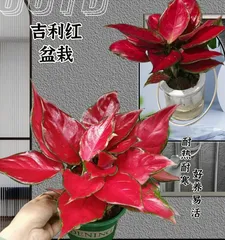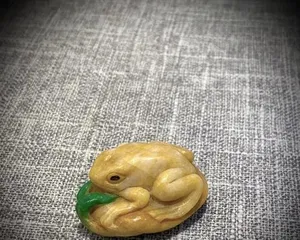In people's daily lives, the demand for plants is increasing. The Lucky Plant, also known as the "Money Tree," is highly sought after and has become a top choice for home decoration. However, is the Lucky Plant toxic? Can it be safely kept and cared for at home? This article will answer these questions for you.

I: What kind of plant is the Lucky Plant?
The Lucky Plant, also known as Malaysian Dracaena, is native to Malaysia, Indonesia, and other regions. It belongs to the Euphorbiaceae family. This plant is tall and straight, with long, narrow, dark green leaves and hard, upright stems.
II: Care methods for the Money Tree
The Lucky Plant is a tolerant plant with low requirements for temperature and light, so it can be placed in areas with low indoor light. Its care is very simple, requiring only that the soil be kept moist.

III: Is the Lucky Plant toxic?
The Lucky Plant is generally considered non-toxic, but in fact, its leaves and root bark contain certain toxic substances. However, poisoning is only possible with large amounts of direct contact or ingestion.
IV: Toxic components of the Lucky Plant
The main toxic components of the Lucky Plant are cyanogenic glycosides, found in parts such as the leaves, root bark, and seeds. These compounds are harmless within the plant, but once damaged, the released cyanide can cause poisoning.
V: How to prevent poisoning from the Lucky Plant?
When caring for the Lucky Plant, you should avoid direct contact with its leaves and root bark. This is especially important for curious groups like children and pets, who should be supervised more closely. Also, during planting and care, do not expose the roots to direct sunlight.

VI: Uses of the Lucky Plant
The Lucky Plant is a common landscaping plant. In addition to being a common home decoration, it can also be used for greening environments like flower beds and parks.
VII: Feng Shui benefits of the Malaysian Dracaena
In Feng Shui, the Lucky Plant is considered a symbol of attracting wealth and fortune. It is particularly effective in enhancing financial fortune and can bring good luck and wealth to people.
VIII: How to choose a Lucky Plant
When selecting a Lucky Plant, choose a healthy plant free from pests and diseases. Varieties with firm, brightly colored leaves are preferable. Also, avoid purchasing plants that have been over-fertilized or sprayed with pesticides.
IX: How to water the Lucky Plant correctly
The Lucky Plant has a relatively flexible growing environment, so watering methods also need attention. It is recommended to use a transparent pot and lay transparent pebbles or sand at the bottom, which allows excess water to drain smoothly.
X: Disease prevention and control for the Lucky Plant
When caring for the Lucky Plant, you may sometimes encounter diseases such as wilting or yellowing leaves. In these cases, different treatment methods should be adopted according to the situation, such as changing the soil or trimming dead leaves.
XI: Propagation methods for the Lucky Plant
The propagation methods for the Lucky Plant are relatively simple. Common methods include stem cuttings, cuttings, and division. Also, hygiene should be maintained during the propagation process to avoid spreading diseases.
XII: Value of the Lucky Plant
The Lucky Plant is a high-value landscaping plant that not only beautifies the environment and purifies the air but also has good Feng Shui benefits. Its market price is also relatively expensive.
XIII: Pairing the Lucky Plant with other plants
The Lucky Plant can be paired with other plants to create different visual effects. For example, it can be paired with succulents and aloe vera to form a unique landscape.
XIV: How to prune the Lucky Plant correctly
When pruning the Lucky Plant, you should follow the principle of "light pruning, frequent pruning, and retaining stems." This means you should lightly prune branches and leaves, clean up dead leaves frequently, and retain the stems to prevent over-pruning, which can lead to poor growth.
XV:
As a common landscaping plant, the Lucky Plant plays an important role in people's daily lives. Although its leaves and root bark contain certain toxic substances, poisoning is only possible with large amounts of direct contact or ingestion. When caring for the Lucky Plant, supervision should be strengthened, and proper care methods should be adopted in order to enjoy its benefits with peace of mind.